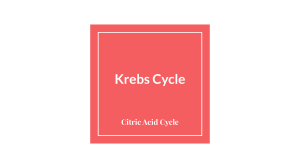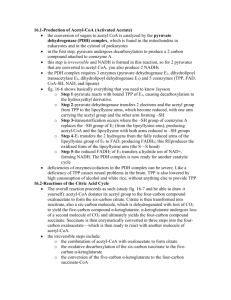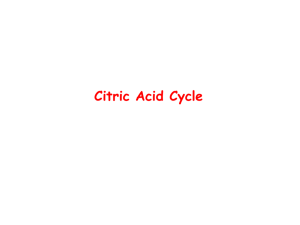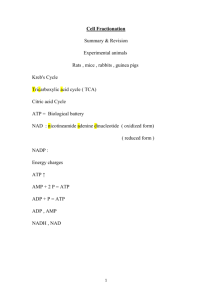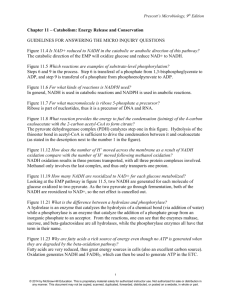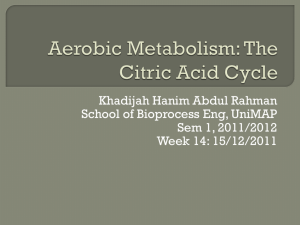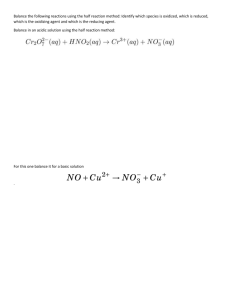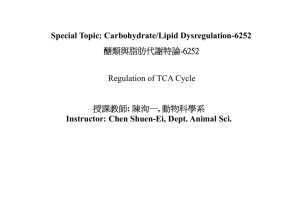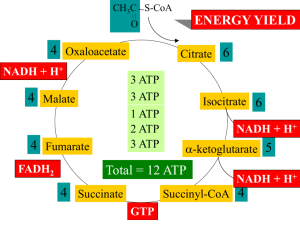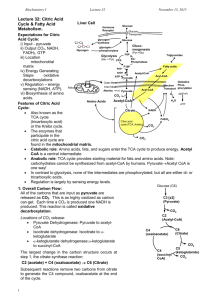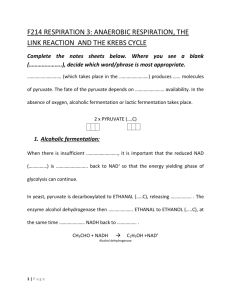KEY
advertisement
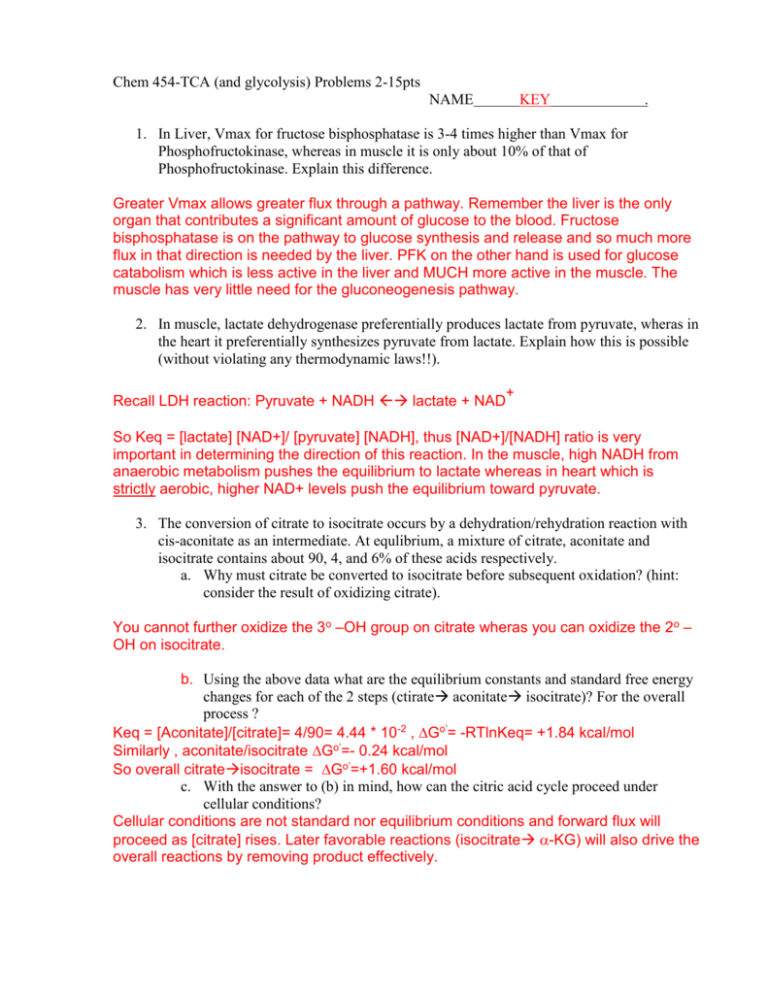
Chem 454-TCA (and glycolysis) Problems 2-15pts NAME KEY . 1. In Liver, Vmax for fructose bisphosphatase is 3-4 times higher than Vmax for Phosphofructokinase, whereas in muscle it is only about 10% of that of Phosphofructokinase. Explain this difference. Greater Vmax allows greater flux through a pathway. Remember the liver is the only organ that contributes a significant amount of glucose to the blood. Fructose bisphosphatase is on the pathway to glucose synthesis and release and so much more flux in that direction is needed by the liver. PFK on the other hand is used for glucose catabolism which is less active in the liver and MUCH more active in the muscle. The muscle has very little need for the gluconeogenesis pathway. 2. In muscle, lactate dehydrogenase preferentially produces lactate from pyruvate, wheras in the heart it preferentially synthesizes pyruvate from lactate. Explain how this is possible (without violating any thermodynamic laws!!). Recall LDH reaction: Pyruvate + NADH lactate + NAD + So Keq = [lactate] [NAD+]/ [pyruvate] [NADH], thus [NAD+]/[NADH] ratio is very important in determining the direction of this reaction. In the muscle, high NADH from anaerobic metabolism pushes the equilibrium to lactate whereas in heart which is strictly aerobic, higher NAD+ levels push the equilibrium toward pyruvate. 3. The conversion of citrate to isocitrate occurs by a dehydration/rehydration reaction with cis-aconitate as an intermediate. At equlibrium, a mixture of citrate, aconitate and isocitrate contains about 90, 4, and 6% of these acids respectively. a. Why must citrate be converted to isocitrate before subsequent oxidation? (hint: consider the result of oxidizing citrate). You cannot further oxidize the 3o –OH group on citrate wheras you can oxidize the 2o – OH on isocitrate. b. Using the above data what are the equilibrium constants and standard free energy changes for each of the 2 steps (ctirate aconitate isocitrate)? For the overall process ? Keq = [Aconitate]/[citrate]= 4/90= 4.44 * 10-2 , Go’= -RTlnKeq= +1.84 kcal/mol Similarly , aconitate/isocitrate Go’=- 0.24 kcal/mol So overall citrateisocitrate = Go’=+1.60 kcal/mol c. With the answer to (b) in mind, how can the citric acid cycle proceed under cellular conditions? Cellular conditions are not standard nor equilibrium conditions and forward flux will proceed as [citrate] rises. Later favorable reactions (isocitrate -KG) will also drive the overall reactions by removing product effectively. 4. Oysters and some other mollusks live their entire adult lives permanently cemented to an object on the sea floor (talk about a dull life!). This means that sometimes there will be inadequate oxygen for aerobic life and they will have to survive as facultative anaerobes. When oysters are deprived of oxygen, they accumulate and secrete succinate. Even though the TCA cannot operate as a cycle in the absence of oxygen (why?), the reactions can be exploited in a way that maintains redox balance. The 4-carbon TCA reactions can run in reverse from oxaloacetate to succinate.. This produces NAD+ and FAD. Simultaneously the cycle runs forward from citrate to succinate. producing two NADH. Assuming the oysters have a steady supply of oxaloacetate (from amino acids), how much energy could they derive from this process (per “cycle”)? One ATP “equivalent” is generated by succinyl CoA synthetase. The NADH used cancels the NADH produced and the second NADH can reduce FAD via the electron transport system (and “reverse” electron transport by NADH oxidation by NADH-Q oxidoreductase? QH2FAD). This may produce another ATP in the proton gradient formed. The end product would be succinate. 5. Some organisms can grow using ethanol as their sole carbon source (and I believe I have spotted them on Water Street). Propose a pathway for the utilization of this two carbon compound. The pathway(s) should convert ethanol into one or more molecules that can be used for energy generation and as biosynthetic precursors. Ethanol can be converted to acetate (alcohol and aldehyde dehydrogenase) and then to Acetyl CoA. Using the glyoxylate cycle, net production of oxaloacetate and thus other TCA cycle intermediates is possible which can be drawn off for synthesis of amino acids, sugars, nucleic acids, fats, etc. Complete oxidation of Acetyl CoA can generate energy aerobically by TCA and ETS.
